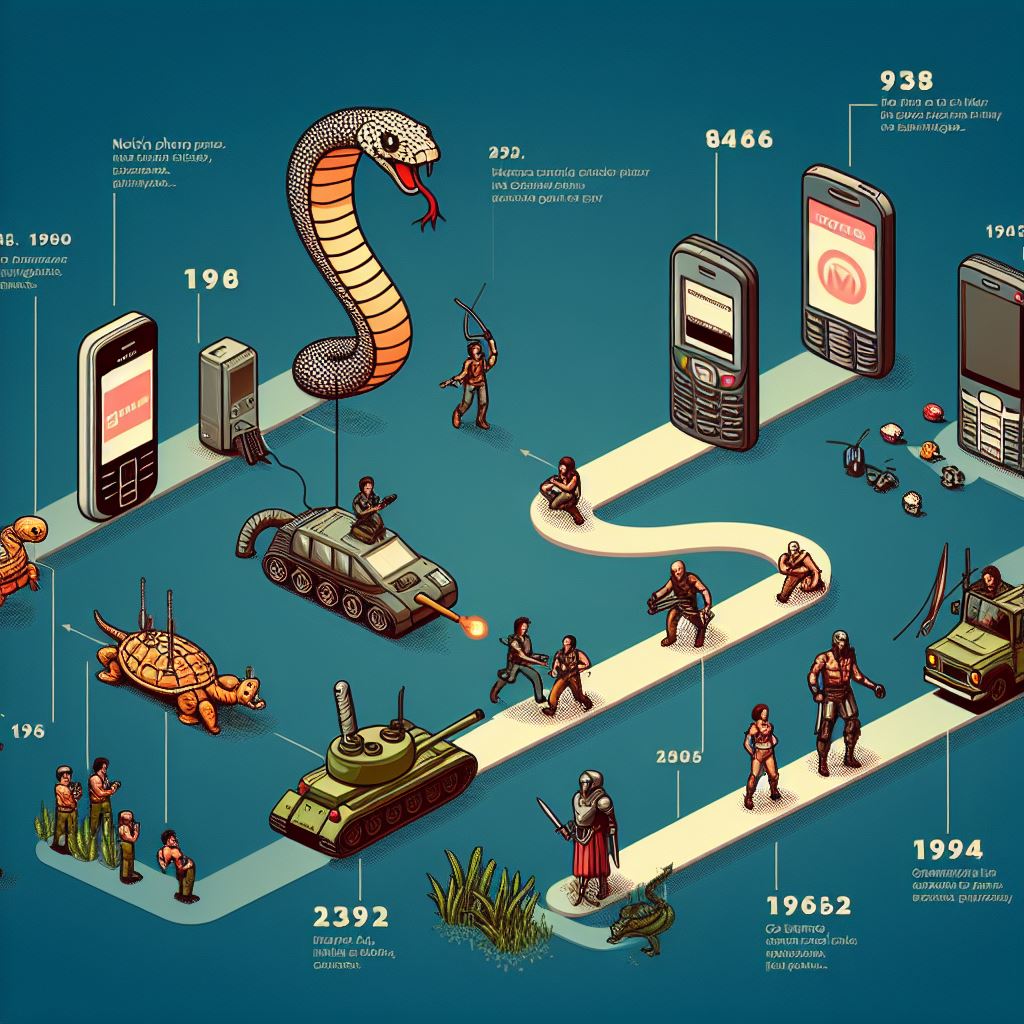Mobile Games
The History of Mobile Games dates back to the late 1990s when Nokia introduced the game Snake on its popular line of mobile phones. This simple yet addictive game laid the foundation for the mobile gaming industry as we know it today. Since then, mobile games have evolved significantly, becoming a multi-billion dollar industry with a diverse range of genres and captivating experiences. In the early 2000s, mobile games gained traction with the introduction of color screens and improved hardware capabilities. Games like Tetris, Bejeweled, and Solitaire became popular among mobile users, offering quick and enjoyable gaming sessions on the go. These early mobile games set the stage for the future growth and development of the industry.
The launch of Apple’s App Store in 2008 marked a turning point in the history of mobile games. The App Store provided a centralized platform for developers to distribute their games, opening up a world of opportunities. This led to an explosion of innovative and immersive gaming experiences, with titles like Angry Birds, Temple Run, and Candy Crush Saga capturing the attention of millions of mobile gamers worldwide. Android, Google’s mobile operating system, also played a significant role in the expansion of mobile gaming. The introduction of the Google Play Store provided Android users with access to a vast library of games, fostering competition and driving further innovation in the industry. The availability of gaming-focused smartphones and tablets further fueled the mobile gaming revolution.
As smartphones became more powerful and capable, mobile games started to rival the quality and depth of traditional console and PC games. Games like Fortnite, PUBG Mobile, and Call of Duty Mobile brought console-like experiences to the palm of players’ hands, showcasing the immense potential of mobile gaming. In recent years, augmented reality (AR) and virtual reality (VR) have made their way into the mobile gaming landscape. Games like Pokémon Go introduced the world to the concept of location-based AR gaming, where players could interact with virtual elements in the real world. VR headsets designed for mobile devices have also allowed players to immerse themselves in virtual worlds and enjoy a more immersive gaming experience.
The rise of casual and hyper-casual Games has been a significant trend in the history of mobile gaming. These games, characterized by their simple mechanics and short play sessions, appeal to a wide audience and have achieved massive success. Titles like Flappy Bird, Crossy Road, and 2048 have become viral sensations, demonstrating the power of simple yet addictive gameplay. Mobile gaming has also seen the emergence of esports and competitive gaming. With games like Clash Royale and Arena of Valor, players can compete against each other in real-time battles and tournaments, vying for glory and substantial prize pools. The mobile esports scene continues to grow, attracting both professional players and enthusiastic spectators.
The integration of social features within mobile games has been another significant development. Games like Words with Friends and Draw Something have popularized the concept of turn-based multiplayer gaming, allowing friends and strangers to compete against each other. Social features such as leaderboards, achievements, and in-game chat have enhanced the social aspect of mobile gaming, fostering a sense of community among players. Looking ahead, the future of mobile gaming appears bright. With the advent of 5G connectivity, cloud gaming services, and advancements in mobile hardware, the possibilities for immersive and high-fidelity gaming experiences on mobile devices are expanding. The history of mobile games has been marked by innovation, accessibility, and widespread popularity, and as technology continues to evolve, mobile gaming will undoubtedly continue to captivate and entertain players around the globe.
Cross-platform compatibility has become increasingly important in the history of mobile games. With the rise of mobile gaming, developers recognized the need to provide seamless experiences across different devices and platforms. Games that offer cross-platform play, allowing players to continue their progress and interact with other players regardless of the device they are using, have gained popularity and extended the reach of mobile gaming communities. The integration of social media platforms within mobile games has further enhanced the social aspect of gaming. Players can now connect their gaming accounts with social media profiles, share achievements, invite friends to play, and compete with each other. This integration not only promotes social engagement but also acts as a marketing tool, as players can share their experiences and recommendations with their social networks, leading to increased visibility and user acquisition for mobile games.
In-app purchases and freemium models have played a significant role in the monetization of mobile games. As the industry grew, developers began offering games for free and generating revenue through in-app purchases, advertisements, and premium content. This shift in business models allowed players to access a wide range of games without upfront costs while providing developers with sustainable revenue streams to support ongoing game development and updates.

In today’s world, games are no longer just entertainment and can be a way to earn money, both for game development teams and for players who just play. In this context, our game development team released a game through which you can compete and have fun as well as Earn Money. By downloading our TanKash game, you can join this group of players who, while having fun, also earn from playing. Be sure to visit our YouTube channel for more information.



